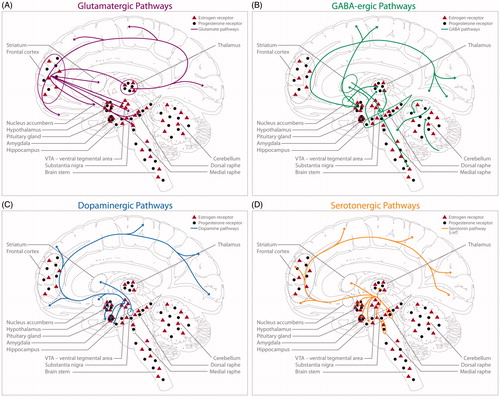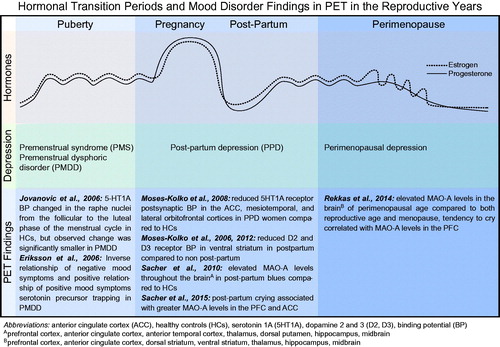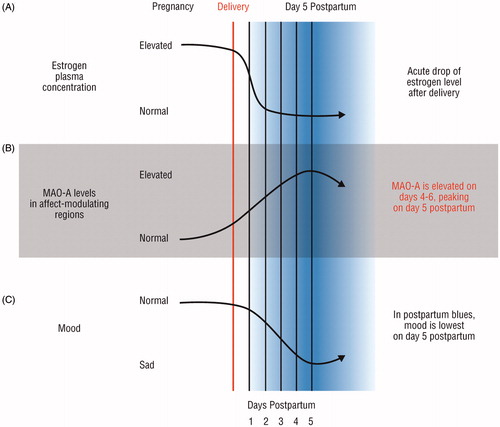Figures & data
Figure 1. Localization of oestrogen receptors, progesterone receptors, and monoaminergic pathways in the female brain (adapted with copyright permission granted from Barth et al., Citation2015). Co-expression of ovarian hormone receptors in the CNS alongside neurotransmitter localization. The glutamatergic (pink), GABAergic (green), dopaminergic (blue), and serotonergic (yellow) pathways are displayed separately for clearer representation. For a detailed description of ovarian hormone receptor distribution in each pathway, please see Barth et al. (Citation2015). (A) Glutamatergic pathways in the central nervous system. (B) GABAergic pathways in the central nervous system. (C) Dopaminergic pathways in the central nervous system. (D) Serotoninergic pathways in the central nervous system.

Figure 2. Hormonal transition periods and mood disorder findings in PET in the reproductive years. Hormones: oestrogen and progesterone rise during puberty and undergo subtle, cyclical variations during the menstrual cycle. Oestrogen and progesterone rapidly increase and maintain high levels during pregnancy, followed by a dramatic withdrawal following delivery in the post-partum period. Both hormones decrease during perimenopause, but oestrogen is markedly unpredictable and erratic in its fluctuations. Depression: depression associated with hormonal fluctuations during the pre-menstrual phase of the menstrual cycle, following delivery in the post-partum period, and in the transition into menopause. PET Findings: summary of PET imaging studies that focused on women suffering from hormone-mediated depression.

Figure 3. Elevated brain monoamine oxidase A binding in the early post-partum period (adapted with copyright permission granted from Sacher et al., Citation2010). Using post-partum endogenous hormone fluctuations as a neurobiological model for depression. (A) Oestrogen levels decrease 100–1000-fold within the first 3–4 days after delivery, and continue to decline at a moderate rate afterwards. (B) Monoamine oxidase A (MAO-A) levels are significantly increased during the post-partum period, especially in the early period. There is a peak in MAO-A levels on day 5 post-partum. (C) Approximately 70% of post-partum women experience mood symptoms such as sadness, anxiety, and irritability. Mood is lowest on day 5 post-partum.

